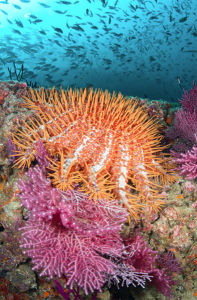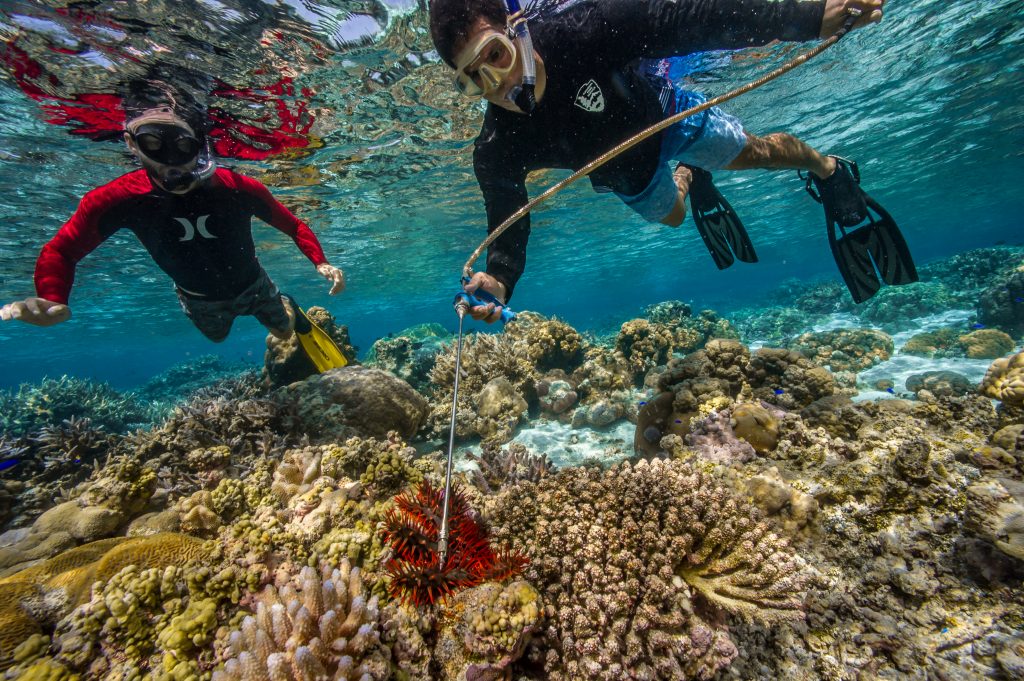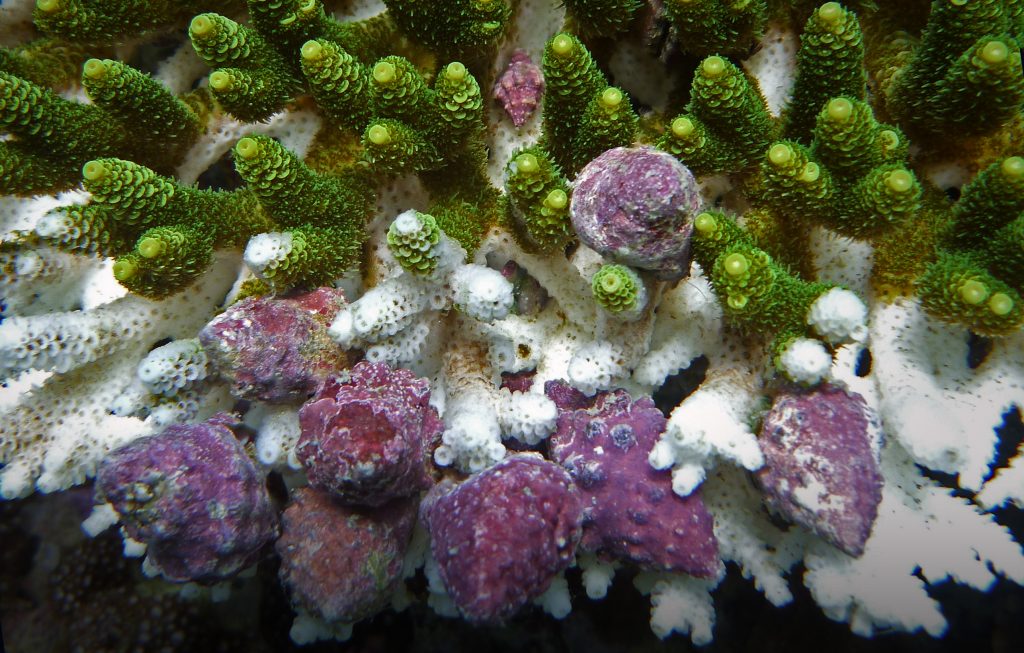Coral Predator Outbreaks

Crown-of-Thorns starfish in a field of branching Porites. Photo © Warren Baverstock/Ocean Image Bank
Coral predators (or 'corallivores') are naturally occurring organisms that feed on corals for their polyps, tissue, mucus, or a combination of the above. Such predators typically include echinoderms (starfish, sea urchins), mollusks (snails), and some fish.
Corallivory is a common process that, under normal conditions, allows for natural turnover in the ecosystem. However, when these predators are overly abundant (e.g., outbreak conditions), they can cause significant declines in coral cover.
Common coral predators include:
- Crown-of-Thorns starfish (COTS), which are found throughout the Indo-Pacific region, occurring from the Red Sea and coast of East Africa, across the Pacific and Indian Oceans, to the west coast of Central America. COTS can be a major driver of coral loss in the Indo-Pacific, particularly under outbreak conditions.
- Drupella snails, which are commonly found living on corals in reefs throughout the Indo-Pacific and Western Indian Ocean.
- Coralliophila snails, which are often more problematic for Caribbean reefs, although some species are prevalent in the Pacific.
Management Strategies
Marine protected areas have been shown to mitigate the abundance of coral predators on coral reefs by increasing the protection of predators that feed on and control corallivores. This has been shown for COTS, ref Drupella snails, ref and Coralliophila snails, ref and highlights the role of both reactive (removal) and proactive (marine area protection) management strategies in controlling the threat of overabundant corallivores for coral reefs.
A range of techniques is available for removing or preventing the spread of corallivores, but these techniques are generally only feasible for local scale controls. For this reason, control of coral predators is normally only attempted at smaller scales (a few hectares or less), such as around high-value tourism sites.
Crown-of-Thorns Starfish (COTS)
Injecting COTS with common household vinegar is now considered the most accessible and efficient method to cull the starfish. ref Mechanical methods for controlling COTS are expensive and labor intensive, thus may only be justified in small reefs that have high socioeconomic or biological significance, such as important spawning sites, tourist areas, or areas with extremely high biodiversity. ref In Australia, the Crown-of-thorns Starfish Control Program trains and employs over 100 people and has dedicated vessels to reduce and maintain crown-of-thorns starfish numbers at levels where their impact on coral is minimized.

Injection of a COTS on snorkel. Photo © Shaun Wolfe/The Ocean Agency
Drupella Snails
Drupella tend to prefer branching corals with complex three-dimensional structures, where they cluster around branch bases. Hiding deep within colonies makes them difficult to detect and access. Some tourism operators on the Great Barrier Reef have had success using long tweezers and flexible claw pickup tools to remove snails one by one. This can be very time-consuming, and it is difficult to be certain that all animals are removed from any one coral colony. Experiences to date from Australia suggest that snail removal can be effective at reducing tissue loss or mortality of target coral colonies ref but is unlikely to be effective as a method for controlling predator populations.
Coralliophila Snails
In Florida, manual removals of Coralliophila snails is part of the Recovery Plan for elkhorn (Acropora palmata) and staghorn corals (Acropora cervicornis). While the process is time consuming, it is recommended to protect target endangered species ref or as maintenance during coral reef restoration efforts.

Drupella snails on a colony of A. millepora in Thailand. Photo © Chad Scott/Conservation Diver
